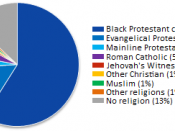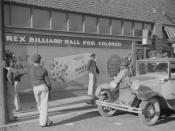Deborah Senouvor
2nd Hour
Ms. Bentley Smith
Am. History Gt
Throughout the early 1900s, the South became known for African Americans like
Margaret walker as a "sorrow home". Life was not easy for them. More than two thirds of
African Americans were sharecropping farmers who paid the landowners a part of their
crops in exchange for rent of their land. Jobs were also scarce and low-paying. Some
factories were simply closed to them and they were often the last ones to be hired and the
first ones to be fired. African American women had to work as household help for whites
at wages that kept them rapped in poverty. Some fell deeper and deeper in debt to
landlords, landowners and store owners. Schools were few and poor so many of their
children were taught at home.
The hope that the conditions would be better in the North led many African
Americans to pack up their bags, eager to take advantage of northern opportunities
and leave behind the poverty and discrimination of the Jim Crow South.
But they did not
know that their action would change for ever both the lives of the immigrants and the
history of race relations in the world. The Great Migration was the migration of
thousands of African-Americans from the South to the North. African Americans were
looking to escape the problems of racism in the South and felt they could seek out better
jobs and an overall better life in the North. It is estimated that over 1 million African-
Americans participated in this mass movement. The Great Migration created the first
large, urban black communities in the North. The North saw its black population rise
about 20 percent between 1910 and 1930. Cities such as Chicago, Detroit, New York, and
Cleveland saw some of...


